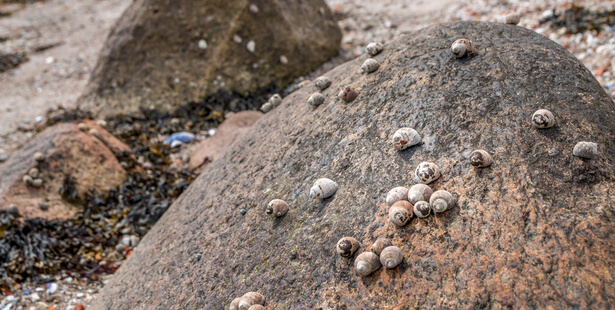There are many species, whether we eat them or not, for which we don’t even ask ourselves what their health status is. Periwinkles are part of this category of those forgotten by wildlife protection, because they are particularly widespread… On our plates as well as at sea!
The bigorneauthis little one marine gastropod so common that the French language agrees on its name throughout the world, is a spiral shell that actually includes many subspecies of the genus Littorina. Of their living environment By going through their particularities, let’s learn a little more about periwinkles, these sea snails members of our ordinary biodiversity.
General information about periwinkles
Periwinkle is therefore a vernacular term (“common” as opposed to scientific) whose most common representative is Littorina littorea which we will take as a reference for this article.
Being able to live on 5 to 10 yearsthe periwinkle does not reach its sexual maturity only after 2 years of life!
Ce mollusc particularly fears dry weather and therefore has a foot with an operculum that it uses to hermetically close its shell and wait for the water to return to surround it.
Periwinkle in its environment © coxy58
Like the vast majority of marine species, Their reproduction in captivity is particularly complexAnimals very sensitive to their environment, their breeding has been tested several times, but systematically abandoned, because it was too random.
Particularities of the periwinkle
Periwinkles are tireless grazers, that is to say thatThey will consume all the green algae and microalgae that they will meet.
Scaled down to the size of an individual, you might think that this is not particularly impressive. But to the extent that The periwinkles are at least numerousthis gives them a very important role in ecosystems.
In fact, by grazing on all these little algae, they limit its proliferation which improves the survival rate of many other species, especially those that are still in the juvenile stage. All young oysters for example, can quickly become invaded by these algae when the periwinkle is not present to get rid of them.
Protection status
The periwinkle does not benefit from any protection status, even with regard to fishing, whether professional or recreational. “Do whatever you want with these animals, it will be fine” …
Threats to the periwinkle
The periwinkle is not really a concern when it comes to species conservation as it is very widely distributed and abundant almost everywhere. But The past has amply demonstrated to us that just because a species is doing well does not mean it cannot decline overnight.
Overfishing
When we talk about overfishing of periwinkles, we are not talking from a professional point of view, but rather from recreational fishing. If professionals do not have a quota or “mesh” (size from which the animals can be caught), it is mainly the Sunday fisherman who can also do what he wants.
Everywhere, therefore, the periwinkle is sometimes fished in excess and without thought by tourists in need of nature and seafood… It would be a matter of taking a little more care with this, because Yes, the periwinkle is abundant, but The great hamster of Alsace numbered tens of millions of individuals, but now only has a few hundred on life support.
Pollution
Coastal waters are impacted by pollutants of all kinds, whether from agriculture, industry or tourism, or Periwinkles are dependent on these environments.
If they seem relatively resistant to all this battery of harmful products, There is no real monitoring of the species on the subject and in particular on their capacity to fix these pollutants before ending up on our plates.
Global warming
An organism of this size that also feeds on algae that are particularly prone to suffering from global warming will inevitably have to face the change in temperature one way or another… Since the thing is not studied, there is a good chance that it will be discovered at time M.
How to help periwinkles?
Any action that leads to less pollution of the oceans will de facto have a positive impact on these widely distributed animals. It is of course complicated to make the periwinkle spokesperson When you want to shine in society, a seafood platter is a good culinary moment to talk about seafood and the threats that weigh on it.
Know and make known is also a way to participate in the preservation of species!

Impossible to miss a periwinkle on its rock © Karl Aage Isaksen
Finally, when you find yourself having a good time on their place of life, do not collect too many and instead trust the local fishermen who know how to manage the resource they represent.
A little moderation, a touch of common sense and a little empathy for the periwinkle from now on might be what will make the difference for the future…
Article updated
consoGlobe also recommends…
Source: www.consoglobe.com


